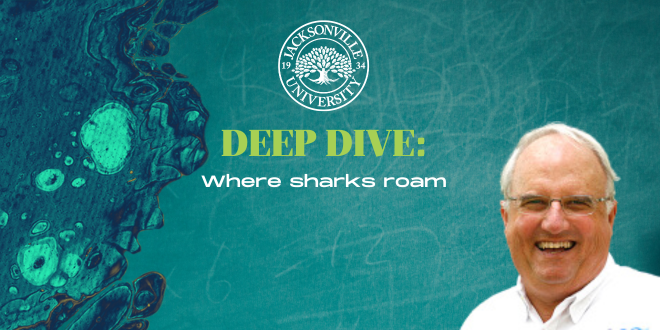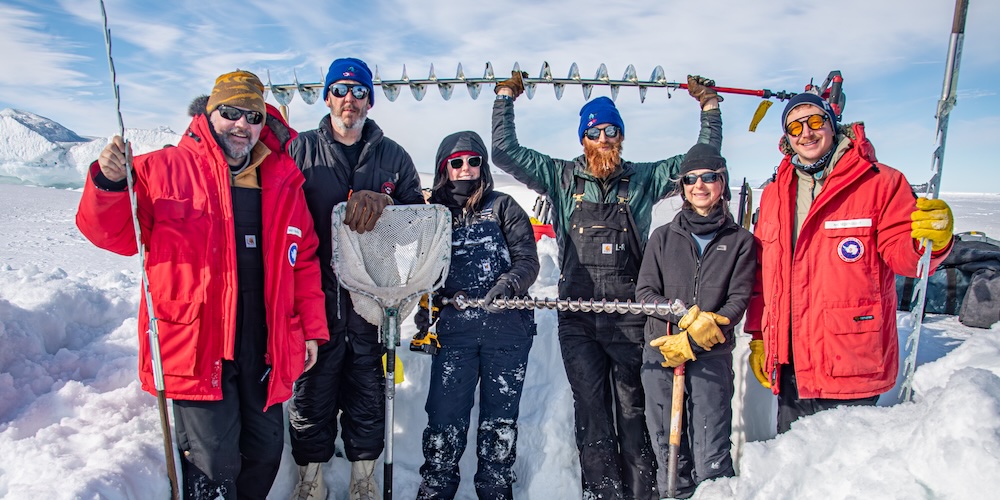It was a cold January evening in 2013 when Chris Fischer, founder of OCEARCH, a shark research organization, noticed that one of their tagged sharks was just off the beach near the Jacksonville Beach pier. The shark, Mary Lee, named for Chris’s mother, had pinged in with its satellite tag. Mary Lee was a 16-foot female great white shark estimated to weigh 3,500 pounds. and Chris thought he needed to notify someone.
So, he called the Jacksonville Beach police. Thus began the relationship between OCEARCH and Jacksonville.
OCEARCH followed Mary Lee later that year and came to Jacksonville where they caught and tagged Lydia near the south jetty of the St. Johns River. She was a 14½-foot great white shark, tagged within sight of the Poles close to Hanna Park, one of the area’s most popular surfing and fishing spots.
Then, in February 2017, OCEARCH partnered with Jacksonville University and its Marine Science Research Institute, to establish an institutional base. Chris Fischer is Explorer-in-Residence at JU and is often on campus lecturing classes ranging from art to business to communications and yes, marine science. In 2018, Chris was awarded JU’s Marine Science Pioneer Award where he joined previous winner Bob Ballard of Titanic fame.
That relationship rose to a new level on Saturday, November 25th, when the OCEARCH ship docked at its new home port in Mayport. The ship was there to begin its 46th Expedition. This was marked with a Launch Kickoff Event on the dock on Monday, November 27th.
The celebration was attended by local, and state elected officials along with OCEARCH and JU leadership as they prepared, not only for the expedition, but also the establishment and construction of what will become the world headquarters of OCEARCH. Local and state funding has been secured to begin site development next year.
So why is the research that OCEARCH is doing important?
Sharks are the top-level predators in the ocean and as sharks go, so does the entire ecosystem, including the St. Johns River. They are analogous to the wolves of Yellowstone; the term keystone species applies to both sharks and wolves.
People have long misunderstood the role of predators and their importance to the entire food chain. But when you reduce or eliminate the top carnivore, the entire system is impacted.
Over many centuries, ecosystems have evolved with the birth and death of organisms reaching an equilibrium that is balancing the number of births to the number of deaths, be that from old age or being food for a predator.
When the top predator is reduced or eliminated, the level below it grows without constraint. That, in turn, causes the next lower trophic or feeding level to be severely reduced allowing the next trophic level down to expand. The entire system is suddenly out of balance. That top level predator is the keystone species. Just like the keystone in an arch is critical to the entire structure, so is the keystone species to the entire ecosystem.
So goes sharks, so goes the ocean. The research that OCEARCH is doing is critical
to understanding what we have come to describe as the Great White Shark Life Cycle
Puzzle. And while people who are trying to catch fish may be frustrated when a shark
devours their catch, the very fact there are more sharks means there are more fish.
Ironic, isn’t it?
Glad you asked River Life
Are there sharks in the St. Johns River? The short answer is “Yes,” but they are largely limited to the regions with higher
salinity. Occasionally some will wander further upstream, but they do not appear to
stay very long. They are mostly small and young sharks with bull sharks being known
to come into fresh water occasionally.



